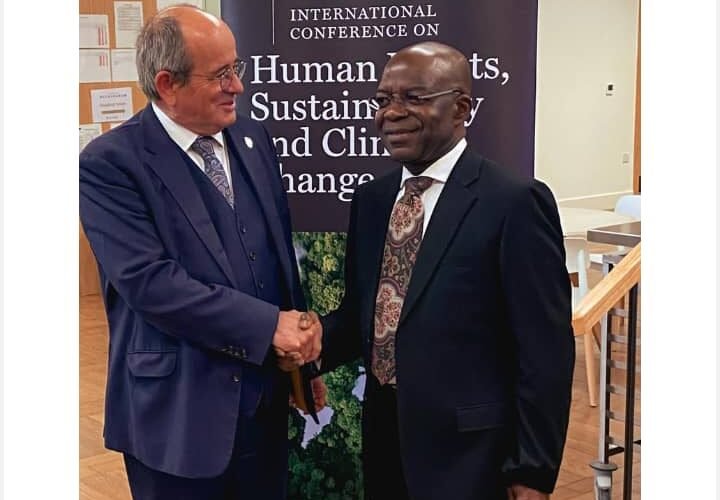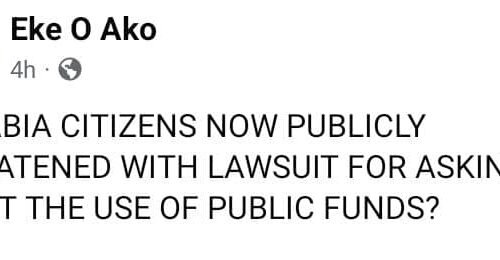BUILDING CAPACITY TO SUPPORT SUSTAINABLE DEVELOPMENT ACTIVITIES: A CASE STUDY OF ABIA STATE.
PRESENTED BY THE GOVERNOR OF ABIA STATE, HIS EXCELLENCY DR ALEX C. OTTI, OFR, AT THE INTERNATIONAL CONFERENCE ON HUMAN RIGHTS, SUSTAINABILITY AND CLIMATE CHANGE AT THE SCHOOL OF LAW, UNIVERSITY OF BUCKINGHAM, UNITED KINGDOM.
- Evolution of Development.
1.1. Historical evolution of development concepts, focusing on living conditions, social justice, and governance:
Development is an ever-present idea that continues to evolve as human society reaches new possibilities and comes to a new sense of awareness of its strengths, opportunities and environmental advantages. The theory of development has preoccupied economists, policy makers and a wide range of other professionals for centuries. Improvement or lack thereof in the living conditions of the various demographics and income groups was the first layer of interest in the study of development.
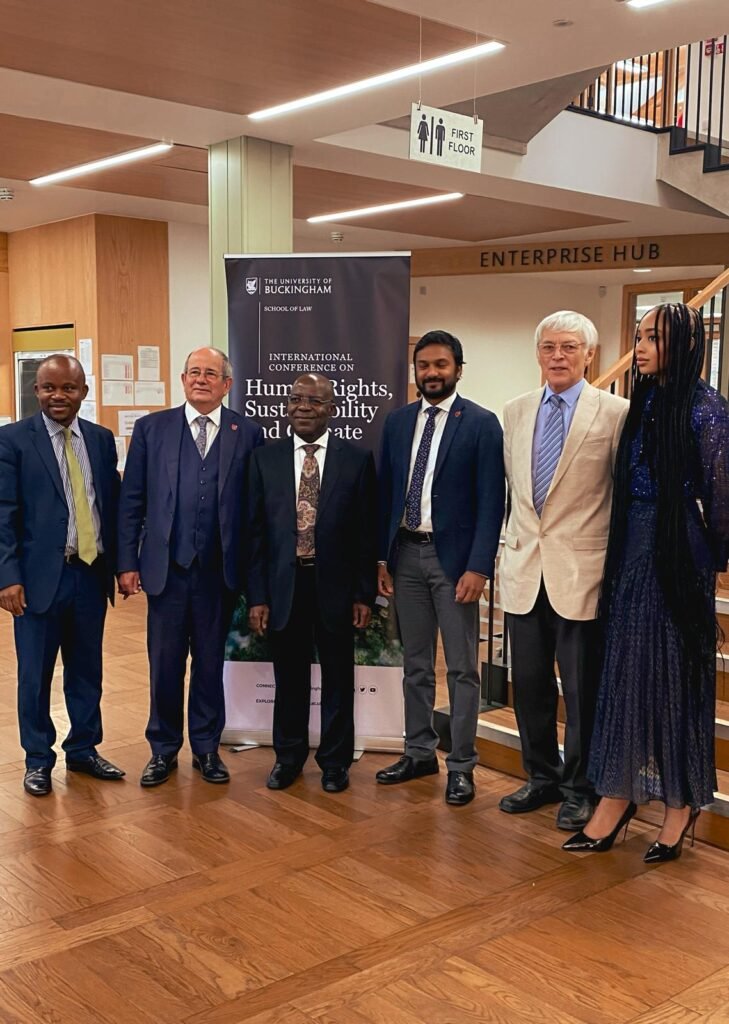
As society began to advance, scholars turned attention to other equally important frontiers of fulfilment beyond the material well-being of the populace. This era opened new vistas of attention in the quest to understand the evolution of our progress as social justice, respect for the fundamental rights of citizens, democracy, and transparent governance systems began to count as important development metrics (Abdelhameed, 2016). Evidently, the understanding of development will continue to expand as researchers break new grounds into the dynamic nature of individual and social aspirations as Sen (199) suggested.
1.2. Scholarly contributions to the study of wealth distribution and poverty reduction:
The principle of dynamism drives the study of development across epochs, the understanding that nothing is static (Reyes, 2001). Adam Smith, James Steuart, David Hume, and John Stuart Mill, whose thoughts and ideas pioneered the subject of development studies, focused extensively on the principles of wealth distribution and the best path to eliminating poverty and lack among the majority within the community. As the subject continued to expand, scholars began to look beyond just material comfort to draw attention to how the principles of equality, freedom and justice resonate with the ideals of development across broad frontiers (Abdelhameed, 2016).
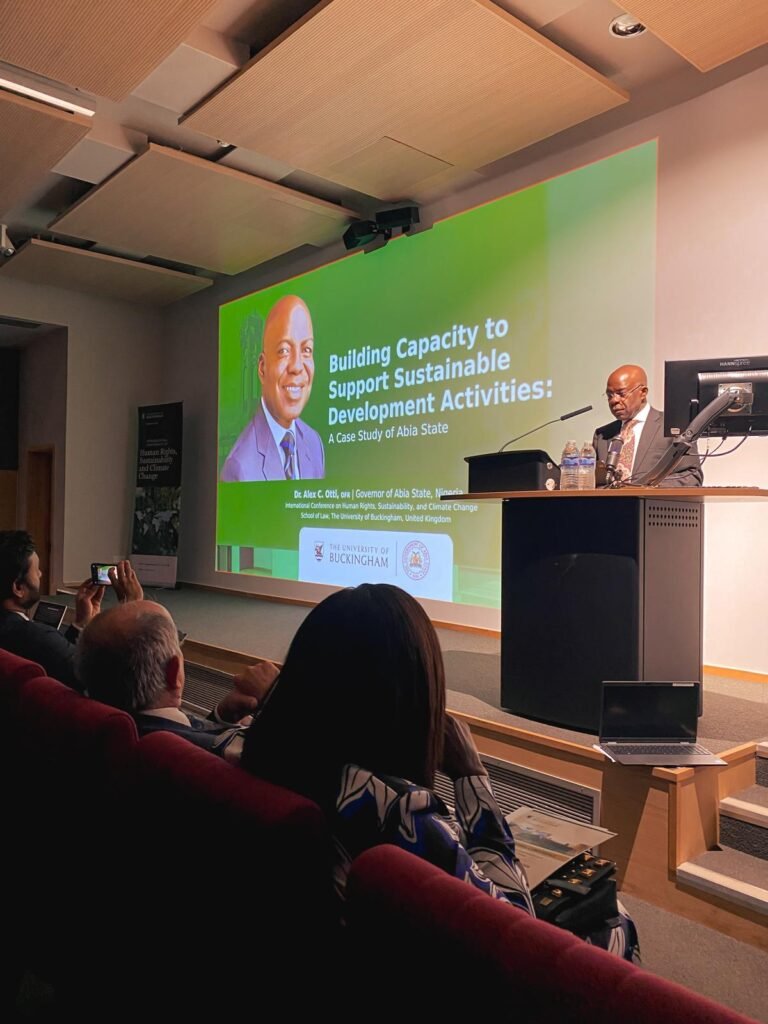
These expanded parameters influenced the policy decisions of leaders who sought to improve the material well-being of the citizens while also addressing the challenges of inequality through deliberate initiatives that are aimed at reducing the gaps between the haves and have-nots. Advancements in the field of development studies elicited policy debates around the subjects of freedom, justice, and the pattern of interactions between individuals and institutions on the one hand and between individuals and the State on the other. Ultimately, these debates gave birth to new frameworks that empowered individuals and institutions to attain new levels of freedom through respect for fundamental rights, access to justice and wide adoption of the principle of equity. This epoch focused on improving the internal dynamics within the societies, advancing the material well-being of the population, and creating new layers of freedom for everyone to live happily, pursue their aspirations and thrive — without being judged on some primordial considerations.
- Global Development Initiatives.
2.1. Post-world war II development efforts emphasising infrastructure, social services, and governance:
A new consciousness arrived with the end of the Second World War as the wave of reconstruction and decolonisation spread across Europe, Africa and Asia. The focus of development at this stage moved from just an exclusive concern with the welfare of families and individuals within their immediate societies to concern for the wellbeing of other human communities across national frontiers, especially the countries just recovering from the devastations of the War, and former colonies that recently gained independence. The United States was at the forefront of this initiative as it set out resources to support the rebuilding and development efforts across the world, providing technical and humanitarian assistance to improve the welfare of individuals and groups across scores of foreign nations. Development scholars at this era sought to build a connection between modernisation through science and technology and the efforts to reset the global human community in the wake of a new world order. As it had become fundamental in the pursuit of development, the emphasis on poverty reduction and improvement in the material welfare of the populace remained constant. This era, however, saw a new focus on infrastructure development, expansion of social services, increased cross-border trade and a new awareness of the connection between accountable governance and development.
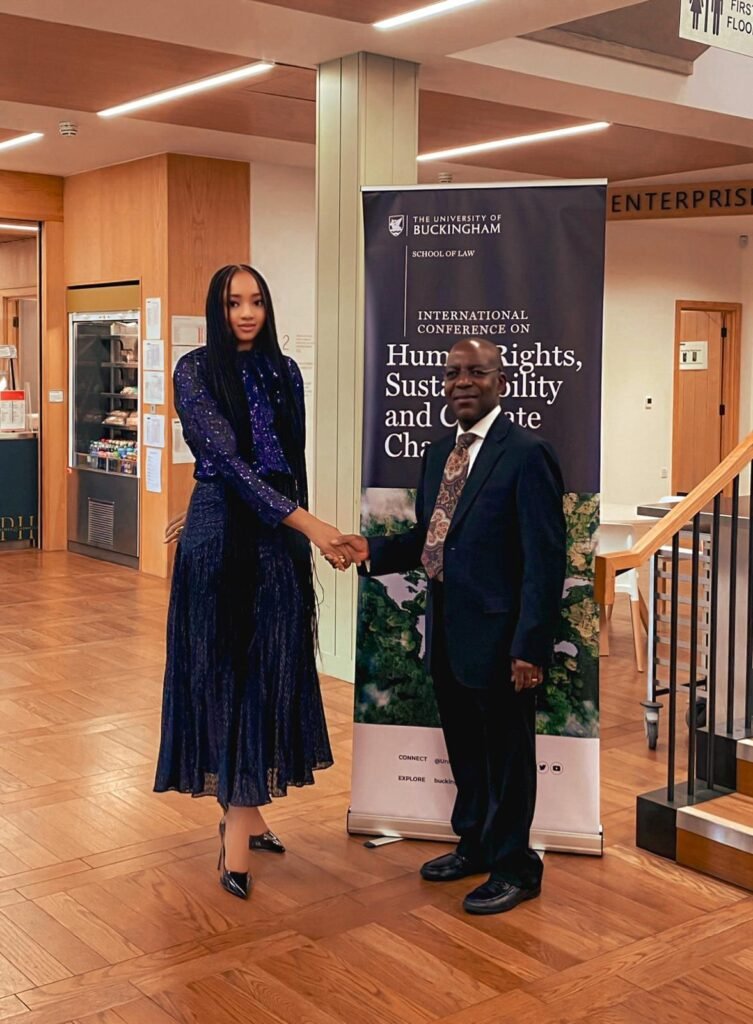
This epoch was marked by the adoption of new development philosophies and policies that birthed tremendous levels of development worldwide as individuals, businesses, and societies attained new levels of prosperity. During this era, scholars saw development from an international prism — and although the focus on domestic peculiarities did not totally disappear, a new paradigm emerged.
2.2. Shift in focus after the Cold War towards interdependence, cooperation, and addressing global threats:
At the end of the Cold War era in the 1990s, a new strand of thinking emerged in development scholarship as the focus shifted to creating a common future for humanity. This was the era of globalisation. This era saw the expansion of learning on the interdependence of our global community in the pursuit of the common good and the imperative of advancing the collective capacity to repel the threats that put nations and their people at risk. These include terrorism and all forms of war.
The key objective for scholars at this point was to establish vistas of inter-connectedness amongst global communities and how growth and stability can be engineered to support improved living conditions for billions of people worldwide. At this stage, the emphasis was on how to simultaneously scope the development status of society through inward and outward assessment to understand what opportunities exist within and outside, and what policy mix will yield the most fruitful outcomes for the medium to long-term benefit of all groups. It was also important to collectively address the identified threats that may derail the shared development aspirations of the entities concerned. Development theories at this point, focussed mainly on international partnerships. This era set the stage for empiricism in international relations and the formulation of foreign policy frameworks — placing pragmatism over ideals as nations realised how much they needed each other for mutually beneficial relationships as captured in Todara (2000).

- Modern Development Theories.
3.1. Classical, Neo-classical and Keynesian approaches: Emphasis on technology and market regulation for equitable growth:
The central focus of development research at this epoch was to understand the interaction between man and the environment in the push for man’s ultimate survival. This was whether we were dealing with the 19th century classical theories of growth, which favoured the free market paradigm of growth and the role of the invisible hand in bringing about stability in the long run, or the Neoclassical principle with its extensive focus on the role of labour, capital and technology in the development trajectory of a society, along with all the other paradigms that dominated economic development thinking over two hundred years following the publication of Adam Smith’s The Wealth of Nations in 1776, through the period of the Great Depression when J. M. Keynes’ very influential book.
The General Theory of Employment, Interest and Money, established the shortfalls in the classical approach to development by arguing that relying extensively on market forces is bound to inevitably bring about recession when aggregate demand falls below expectation, and inflation at times of very high aggregate demand, lead to inefficient macroeconomic outcomes. Keynes advocated for a regulated market economy driven largely by the private sector, with the governments and the central banks intervening regularly using the tools of fiscal and monetary policies to achieve predetermined macroeconomic outcomes such as reduced unemployment, moderate inflation, high GDP growth, and poverty reduction.
3.2. Neglect of future generations’ needs and environmental impact in historical economic theories:
Through a careful analysis of the above insights and scholarly philosophies on the path to attaining improved living conditions for the general population, one finds that not much attention is paid to the future, the generations that will be here when we are gone. Keynes did, in fact, dismiss the classical economists’ concerns about the long run by quipping that “in the long run, we are all dead.” The regular economic development theory was largely concerned with catering to the needs of the present generation, seeking optimal returns from all the factors deployed in the production process using the right technology and skills. In the agrarian age, for example, the driving concern was to obtain maximum yield per hectare. Labour and machines were brought in to increase output in pursuance of the landowners’ objectives and society’s food supply and security targets.
3.3. Warnings and concerns over resource depletion and environmental collapse: critique of development perspectives:
In addition to the scant regard paid to the needs of future generations, another major failing of the regular economic development philosophy of the 18th, 19th, and early 20th centuries was the blatant disregard for the condition of the environment and its continuing capacity to sustain man’s financial activities beyond the immediate. Although T. R. Malthus did call attention to the dangers of explosive population growth vis-à-vis limited food supply in a 1798 essay, future scholars were only able to establish the loopholes in the theory, especially as technology and discovery of new lands further increased food supply even as population grew. This seeming paradox raised unsettling questions about the postulations of the British scholar and, of course, the validity of his theory. Economic experts and scholars over the years were practically less concerned about the impact of man’s activities on the environment and the planet’s capacity to support future generational needs.
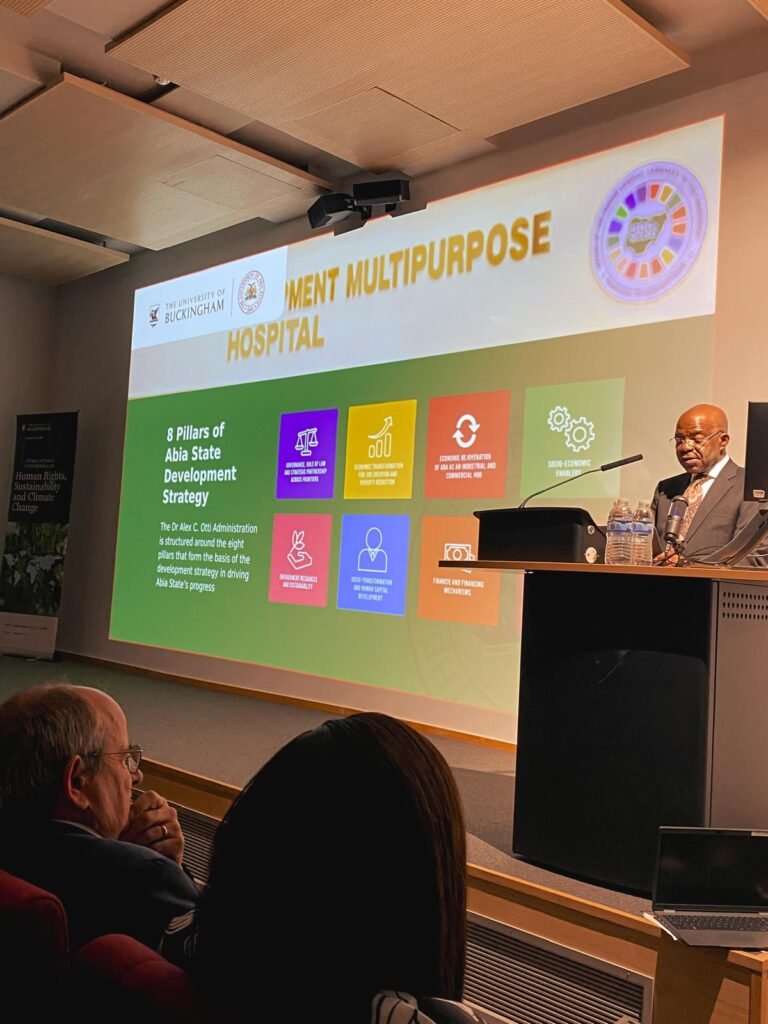
3.4. Balance between economic growth projections and ecological preservation: scholarly debates sparking criticism and pessimism:
To be fair, the 1972 book “The Limits to Growth” by Meadows et al., discussed the uncertain fate that awaits humanity when, ultimately, exponential economic and population growth are eventually confronted by the reality of finite resource supply. The highly acclaimed book alerted the world to the unpleasant outcomes that are bound to follow as man continues to deplete the earth’s resources in pursuit of economic growth to meet the ever-growing demands of our vast population.

The authors warned of a possible collapse of the global economic system in a hundred years if non-renewable resources continue to face unprecedented depletion in the wake of rising industrial activities across parts of the world. Similarly, Beyond the Limits, published in 1992 in an attempt to address the criticisms raised in the 1972 edition, was met with even fiercer criticisms as cynics argued that the projections were misleading and incorrect. Many notable authors pointedly argued that the concerns raised in the two books were just built on the author’s pessimistic disposition, (see Nordhaus 1992).
These criticisms clearly showed that interests in the planet’s future and the limits of natural resources were very peripheral to mainstream economic development theorists’ consideration. Many authors merely sought to establish new ways of improving the stock of economic output for the welfare of the existing local and global population.
- Attention Turns to Sustainable Economic Development.
4.1. Integrating environmental and future welfare considerations into mainstream economic development:
At its core, sustainable economic development seeks to address the manifest failures of older mainstream economic development ideas by bringing the environment and welfare of future generations — two critical subjects that were either hitherto neglected entirely or restricted to mere peripheral footnotes — into the centre of the conversation (see Shi et al., 2019).
The sustainable development framework, as Zhang et al., (2019) pointed, highlights concerns for the environment and the welfare of future generations as very fundamental to the whole idea of development and its associated metrics, especially the welfare of the human person.
4.2. Global attention gained following the 1987 Brundtland report and subsequent establishment of the Sustainable Development Goals (SDGs) framework:
Sustainable development came into global consciousness around 1987 following the publication of a report authored by Gro Harlem Brundtland titled Our Common Future. This report gave the first standard definition of sustainable development as one that meets the needs of the current generation without compromising the ability of future generations to meet their own needs. The report sought to create a balance between meeting the needs of the growing human population and the consciousness that the earth’s finite resources should be able to serve the needs of the present and future generations.
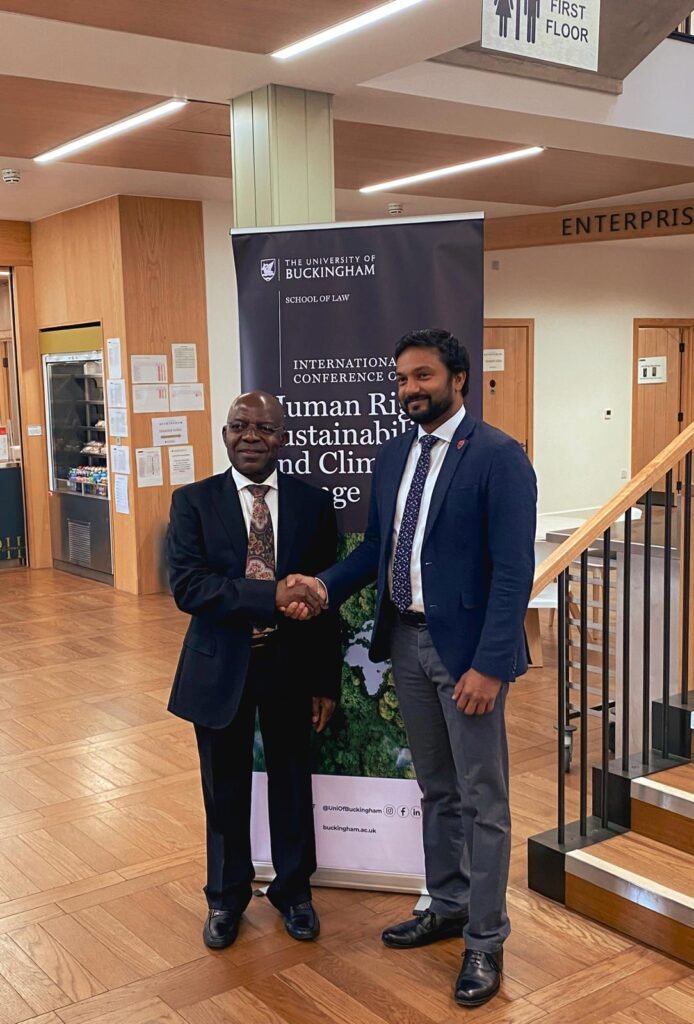
The Brundtland report and its generated interest formed the background for the debates and conversations at the Rio Earth Summit in 1992. Participants reached a consensus that sustainable development must be made a priority of the International Community, recommending that national strategies be realigned to reflect the new global consciousness on the dynamics of sustainable development, including the new framework’s economic, social, and environmental demands.
4.3. Sustainable Development Goals (SDGs), as a successor to Millenium Development Goal (MDG):
A 2002 World Summit on Sustainable Development in Johannesburg, South Africa (Rio+10) reviewed the progress recorded in the efforts at achieving sustainable development and developed new strategies for pushing the agenda mainly through a multi-stakeholder partnerships framework (see Potschin and Haines-Young, 2006).
A subsequent summit (Rio+20) in 2012 held in Rio de Janeiro highlighted the importance of the Green Economy and the development of an institutional framework to drive the agenda of sustainable development on a global scale. The development of the core elements of the sustainable development goals (SDGs) framework, which started in 2015, started at the Rio+20 Summit.
The SDGs are built around a set of clearly defined global goals related to protecting the environment and addressing the international community’s political and economic challenges. It details the core focus areas for nations and institutions pursuing the universal development agenda. Featuring 17 critical areas of focus designed sequel to the Millennium Development Goal (MDG), which was at the centre of global development aspiration from 2000 and ran through 2015, the SDG framework sought to consolidate on the gains made in the MDG era and include a commitment to collectively attack poverty, end the menace of hunger, ensure good health and wellbeing for all, make quality education accessible to all people, attain gender equality, provide steady access to clean water and improved sanitation, pursue clean and affordable energy, decent work and economic growth, industrial innovation and infrastructure, reduced inequalities, sustainable cities and communities, responsible consumption and production, climate action, life below water, life on land, peace, justice and strong institutions, and partnership for the goals (United Nations 2015, and, Rudra and Kurian, 2018).
Carefully considering the above goals, which are largely aspirational, points to a clear departure from the patterns of older economic development models. In the sustainable development framework, the needs of today’s population and those to come are considered broadly.
4.4. Advantages of Sustainable Development Framework:
The priority of attacking poverty and hunger is proof that the primary concerns of improving the living conditions and welfare of the general population remains ever present, like in every other economic development theory. The superiority of the sustainable development model is found in the attention it gives to measures aimed at protecting the environment, including the push for cleaner, renewable energy, climate action, and responsible production and consumption.
The incorporation of partnerships in pursuit of these goals for developed and developing nations also points to a new consciousness that, although featured in older development models and frameworks, has this time received the prominence of place it deserves and, of course, the holistic pathway to drive it. The sustainable development framework appreciates the need for partnerships among stakeholders, collaboration, and multi-level engagements to achieve shared prosperity while addressing the poverty nightmare as a collective responsibility of both poor and prosperous economies.
In summary, the sustainable development framework has become widely acceptable because it offers a global perspective on social, economic, and environmental policies, considering the present and future needs.
The recognition of the importance of biodiversity, the appreciation and imperative to protect indigenous cultures, the cultivation of economic and social equity, and the importance of robust governance mechanisms dedicated to solving problems and making good use of the resources of the earth collectively add to the appeal, and general acceptance of the sustainable development paradigm as a more reliable and all-encompassing framework for robust economic and social development in all parts of the world.
4.5. Critiques of Sustainable Economic Development:
Its wide acceptance notwithstanding, the sustainable economic development paradigm has also been strongly criticised by scholars and analysts who describe it as vague and lacking in specificity (Swain, 2018, and Pecquet, 2023).
It has also come under attack for lacking critical milestones that can be quantitatively measured, which further lends credence to the views of those who criticise it for vagueness. These criticisms have, however, not taken anything away from its appeal amongst policymakers and change advocates who consider it comprehensive and practical in large part, speaking to real needs which affect billions of people, especially in the developing economies.
- Building Capacity to Support Sustainable Development Activities: The Abia Story.
5.1. Abia’s Efforts Towards Sustainable Development
The sustainable development framework favours an all-of-society approach to achieving superior economic, social, and environmental outcomes that guarantee improved quality of life for present and future generations. The sustainable development paradigm is all-encompassing and appropriately appreciates development as a dynamic idea that keeps evolving in response to new awareness and aspirations of the age.
Abia, one of the five States in the South-East region of Nigeria, has a population of about 4.2 million people and a GDP (Gross Domestic Product) of about US$7.1 billion. Abia has two important urban locations — Umuahia, the State capital, and Aba, the commercial nerve centre. Aba is one of the most crucial trade destinations in West Africa. Farming and trading are the predominant occupations of our people. Abians also focus on producing high-quality fashion products and several other household and industrial items sold in markets across Nigeria and West Africa.
We bought into the sustainable development framework long before assuming office in May 2023. Our campaign manifesto was built around the sustainable economic development framework because we saw that it holds great potential to drive the development of the various communities in the State and ultimately make the future more prosperous through the prudent use of resources.
Additionally, it clearly focuses on building systems that support our people’s economic and political aspirations. Key elements of these aspirations include eliminating poverty and hunger, improving the health and well-being of the general population, quality education, decent work for all, and economic growth for the larger community, among other relevant components of the SDG.
Permit me, however, to share my views on the subject matter of climate change as it relates to clean energy and net zero emissions for purposes of intellectual honesty and presentation accuracy. While we agree that the reduction of carbon footprint is unavoidable, we contend that the deadlines set by countries in Europe and America may be a little too aggressive and unrealistic for Africa to achieve.
We also note the cost of attaining net zero emission in countries like Nigeria who rely on oil and gas to run their economy. We see gas as a cleaner hydrocarbon quite unlike coal and believe it should pass as a transition fuel in the march towards net zero emission. This argument is eloquently canvassed in my article titled “Can Renewables Change the Future of Gas?” (Thisday Newspapers, September 13, 2021). Again, in my column in the wake of COP 26, titled “Of Glass Houses, Stones and Glasgow” published in Thisday Newspapers of November 22, 2021, I had maintained that all the regions and nations of the world are not on the same development pedestal with respect to climate action.
In Africa for example, our development realities still revolve around hygiene issues as scores of millions of people around the continent wake up each morning preoccupied with concerns about where the next meal will come from. Challenges of unemployment, poverty, and access to basic amenities including clean water, quality road networks, and stable electricity still dominate social and political discourse across the continent.
In another 2021 article, I shared a depressing report from the World Bank which ranked Nigeria, Africa’s most populous nation, as being the largest energy deficient country in the world with more than 40% of the total population lacking access to grid electricity.
The implication is that active production is hampered as machines and other resources lie idle across factories and production centres. This perhaps explains Africa’s record of low emissions at just 3.8% of the global total.
My argument at the time, as it would be today, is that while we shall do well to keep our eyes on the future and work collectively with the rest of the world for an emission-free world eventually, it would not be entirely prudent to immediately follow the same trajectory as those who have since conquered the existential development challenges we are still grappling with today.
Our task as leaders is to constantly appraise the state of affairs in our society and make decisions that will be in the long-term best interest of our people, taking cognisance of available resources, and competing needs of the populace.
5.2. Alignment of Abia State’s development strategy with the SDGs.
5.2.1. Emphasis on poverty alleviation, education, health, and employment opportunities:
Again, we have to continue this section by stating that an honest appraisal of our development reality imposes a certain burden on us as leaders of the developing world to adopt initiatives that will improve the socio-economic development of the general population, prioritising programmes that address the challenges of mass poverty, hunger, unemployment and limited access to education and health services.
As a government, we have to restate that we have found the SDGs framework extremely useful in mobilising resources to enable us tackle the development challenges that are germane to our present reality. These include but are not limited to poverty alleviation, improvement in the education and health sectors, and employment opportunities for all who need jobs.
5.2.2. Focus on private sector-led growth, environmental preservation and forest protection:
The Abia State infrastructure restoration project across all parts of the State is designed to create strong enablers for private sector-led growth in our areas of comparative advantage, especially trade, agriculture and light manufacturing.
To protect the environment, we have taken measures to keep our forests away from profiteers and those whose activities are unhealthy for our forest reserves. More importantly, the State Ministry of Environment has been repositioned to adequately cater for our environment’s dynamic needs by setting up robust mechanisms to monitor mining and mineral exploration activities in all parts of the State, protect our water bodies from pollution and safeguard our greenbelt regions.
While we are not yet at the point where we can adopt the same development priorities as our peers in the developed world, we are still conscious of our shared responsibility to the planet, and the future of the environment. This explains why we have gone ahead to set up a department in the State Ministry of Environment with a clear responsibility for climate actions, initiating and executing programmes and policies that limit damage to the natural environment.
The State, I am proud to inform this special audience, has elected to adopt an integrated approach in dealing with the threats of climate change because as I earlier mentioned, everything is intricately connected. In the 2024 fiscal year, we made substantial provisions to finance our climate actions. We have also integrated many important infrastructure projects, including the “Light Up Abia” initiative, to conform to our climate response framework. In this regard, we are actively installing energy-efficient lights using solar technology to increase night time visibility on our major roads and walkways.
Our on-going and recently completed projects in the public schools and health institutions like the Amachara General Hospital, Umuahia and Abia State Specialist and Diagnostics Centre Umuahia have been fully equipped with energy-efficient solutions that have not only reduced our carbon footprints as a State, but have also cut down on our energy spending, supported standard preservation and safety provisions, and generally improved service delivery at these institutions. Recently, I directed the State Commissioner for Power and Public Utilities to engage with the management of the State University to develop an alternative energy framework to address the perennial power problems in the school. We shall extend this effort to other institutions in the State. We believe that renewable energy is the way to go for reasons of cost effeciency, and climate friendliness.
Our grand vision is to power all government buildings in the State with suitable eco-friendly energy systems, tapping into the abundant renewable energy sources in our environment. It may also interest us to note that the State is developing a robust policy framework for off-grid energy solutions to support economic and social activities, especially in the rural areas. Just recently, I appointed a climate expert to coordinate the State’s response to changes in climate conditions and support the drafting, adoption and implementation of policies designed to limit actions that threatens the natural environment across the boundaries of our State.
The message from our State is clear: while we are hungry for tangible fruits of development as it concerns our current status, we are also not ignorant of the damages that actions of the present generation can do to the ability of the environment to support future generations. This approach aligns with my long held position that the most pragmatic development philosophy for those of us in the developing countries is one that tries to quicken the pace of development and then prepare us for the future because we cannot afford the misery of isolation. We must therefore keep our eyes on the ball at all times, focused on today’s challenges, and mindful of the demands of the future.
5.3. Empowerment of women and development agenda:
In Abia, we have also set new standards in empowering women politically by elevating them to vital positions at the decision-making table. In our State, we deliberately place women in key offices where they are given a free hand to drive major government decisions and achieve excellent results connected to the sustainable economic development agenda in education, finance, health, and general administration.
5.4. Recognition of the importance of capacity building and adopting a ‘whole of society’ approach:
We are very mindful of the dynamics of sustainable development and have taken measures that place us in a vantage position to reach important milestones in the next few years. To achieve the lofty objectives we have set out for ourselves, capacity building must be taken seriously. Thankfully, we have taken that head-on.
By adopting the whole-of-society approach, we are also responsible for ensuring that every major stakeholder has a firm understanding of what is required of them to deliver on the key metrics of the sustainable development agenda.
5.5. Engagement of stakeholder groups to create awareness and understanding of the sustainable development agenda and individual responsibilities:
Creating awareness is the first order of business because leaders can only act within the limits of their individual knowledge. Through constant engagement with the various stakeholder groups across different levels of government, the organised private sector, and leaders of socio-cultural groups, the message has been sent that we must take deliberate steps to tackle many of the socio-economic and political challenges facing our land without hurting the capacity of the next generation to address the challenges they may face.
This point is consistently harped on during development strategy meetings, project flag-offs and other platforms where stakeholders meet. The great thing is that this initiative is not just for the Governor alone; everyone connected to the Government understands what we want to achieve and knows what is expected of them in terms of leading by example and creating a new development paradigm across the State. Because we have consistently spread the message of sustainable development through various platforms, community leaders and business executives know exactly what to expect and the checklists to tick when initiating or executing various development projects.
At the very minimum, new projects are required to create jobs in the local communities, use resources responsibly and do little or no environmental damage. Measures for mitigating environmental damages must also be identified through environmental impact assessments (EIA) before a project is approved for execution.
- Governance Mechanism and Performance Measurement. Beyond awareness, project officers across all government agencies continue to receive structured technical support on our development priorities to improve their capacity and effectively understand the essential elements of the sustainable economic development framework. We have also implemented robust institutional and governance mechanisms to oversee and evaluate the progress of implementing our programmes and policies across relevant frontiers. Commissioners and Heads of Agencies are required to constantly measure their performances against key parameters designed and agreed upon by the relevant stakeholders, including leaders of the communities and clans. We are very particular about the impact of programmes on job creation and poverty reduction, especially in rural communities.
6.1. Institutional and governance mechanisms overseeing the progress of government programs and policies.
As a government, our priorities are based on our core development objectives. Abia is presently not at the same level with some of the sub-national units in the developed economies, so it is prudent to be very strategic in the application of resources. Our immediate priorities revolve around tackling the menace of poverty and unemployment in the first instance.
We are also keen to deploy resources and, where necessary, work with relevant stakeholders to improve access to quality healthcare services and education rapidly. When we have satisfactorily taken care of poverty, created jobs for our youth population, and provided quality education and healthcare to the people, we can then move a notch higher to effectively expand our scope of interest because development is about the sequence of steady progress.
6.2. Emphasis on accountability, performance measurement and evaluation against key parameters:
We are working very hard to improve the capacity of our people to deliver on the core programmes tied to our outlined priorities. Periodically, Heads of Government Agencies are required to liaise with other stakeholders to identify how to realise maximum benefit out of every dime spent, cut down wasteful spending, and redirect resources to areas of optimal impact.
We are very particular about robust stakeholder engagements and constant consultations because our experience has shown that the buy-in of these stakeholders is required to drive important initiatives as captured in the various elements of the general sustainable development framework. Through these engagement activities, including our quarterly budget review sessions, clear communications are made, and concerns are addressed holistically — in the presence and with the input of all stakeholders.
Why do we involve the grassroot leaders in the conception and execution of our policies and programmes? Simple: it follows our whole-of-society philosophy and the need to guarantee that the peculiar realities of the various communities are adequately represented, seeing that no one is left behind.
6.3. Clear priorities and robust partnership frameworks to drive the execution of the development agenda:
The importance of setting clear priorities in pursuit of steady progress brings us to the imperative of setting a robust partnership framework to drive the execution of our development agenda. We are a government that treasures collaboration and partnerships across institutions and agencies on the one hand and between government and those in the private sector of the economy on the other.
We are also keen to expand the scope of our partnerships with international agencies and development partners. We regularly interface with organisations and groups that have shown interest and demonstrable capacity to work with us to achieve important milestones in our development agenda. We are open to grants, capacity-building programs for our teachers, health workers, and farmers, as well as equipment and material support for our schools, hospitals, and registered local NGOs.
- Partnerships and Collaborations.
7.1. Emphasis on collaboration and partnerships across institutions, agencies, private sector, and international bodies:
Abia is currently working with several local and international partners to reduce poverty and hunger through programmes and projects that empower our people to earn on their own through prudent use of our untapped local resources, including very fertile agricultural land and water bodies, large population which easily translates to steady market for food and agricultural commodities, and very strategic markets such as the famous Ariaria International Market, the Ekeoha Market which we are currently remodelling, and several others in Aba and Umuahia where thousands of customers from across West Africa troop in and out daily for business activities.
We said not long ago that we are not a hand-out driven population; our people are resilient and love to earn through enterprise, creative engagements and honest labour. What they need to soar is the right support and enabling environment that will spur them to take advantage of the abundant opportunities around us.
This explains why we have remained strongly committed to rebuilding the State’s stock of physical infrastructure, especially roads and public institutions and improving the aesthetics of the environment to reflect the taste of the age.
The overall objective is to dismantle the many obstacles that have stood between our people and their true potential. I am happy to announce that while we are not exactly at the point where we can finally proclaim Uhuru, it is now beyond dispute that Abia is rising, and a new era of optimism has arrived. We shall remain open to support from interested partners because Abia is an important community that is exceptionally strategic to the future we all seek to create through the instrumentality of the sustainable development framework.
- Conclusion
The sustainable development framework has emerged as the most relevant paradigm for reaching the important milestones we seek as we work to build a better world where poverty, hunger, ignorance, diseases, injustice and other evidence of under-development are not permitted to restrict people from living to the fullest of their human potential.
Achieving the above, requires new capacities on the part of those to drive the core element of the development framework, expanding their skillset to be able to respond to new realities and deal with age-old problems in a new and effective way.
The emphasis is on processes and results; public sector officials and other relevant stakeholders need the right exposure to understand the nuances of development through the years to be able to situate the superior proposition and suitability of the sustainable development framework for the new age.
In Abia State, even while being mindful of our present development realities and struggles to meet the existential needs of our population, we have at the same time carefully aligned our programmes to reflect our development aspirations and keep them in line with the sustainable development philosophy.
We are very keen on removing the many environmental and man-made obstacles that limit the capacity of our people to make the most of the abundant human and material resources in our land. Even then, we are also conscious of the truth that the resources that exist do not just belong to the present generation but also to those coming after us.
The main thing here is to strike a balance in solving today’s development challenges without sabotaging the opportunities that should be available to the next generation of Abians.
To accomplish the above, we have revved up capacity-building activities and trained critical stakeholders on the most important development priorities of the State. We have also created a framework that guarantees the inclusion of every stakeholder in the conception and execution of our development programmes and projects, getting their buy-in and taking their fears and concerns into consideration as new realities emerge along the development sequence.
Partnerships across governments and with local and international development partners are also critical to us as we are exploring the opportunities that presently exist to improve the capacities of our leaders, access development grants, and provide training and inputs for our farmers, teachers and health workers.
We are consistently exposing them to new knowledge areas because one of the most important appeals of the sustainable development framework is the fact that it is very practical and relevant to the needs of communities across various parts of the world, especially in Nigeria and Abia State in particular.
Thank you for listening and may God bless you.
Dr. Alex Chioma Otti, OFR
20-09-2024.
(See Table of Contents & References on the Text Handout)

